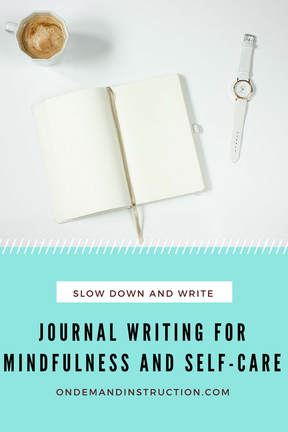
If you are not yet keeping a writing journal, start. Journal writing is a wonderfully therapeutic activity that can reduce stress and anxiety by creating moments of mindfulness. As writers slow down time long enough to reflect on life, a wonderful sense of calm and control can be had.
A few years ago, adults started coloring again and remembered that when we slow ourselves down for a little while, we recapture a sense of self. By closing out the distractions of our technology-based, fast-paced world, people reconnect with a slower pace that allows for mindful self-care. When we slow ourselves down, we open ourselves up. Journaling can allow for extra time to reflect on our busy lives, can reduce stress, and can open opportunities for creative writing. Many people find it difficult to make time to be creative and express themselves, but journaling for a half hour a day can provide that opportunity. If you have not journaled in a while, here are some easy steps to get started. Steps to Start a Journal
|
About the SiteWelcome, Writers! Archives
September 2023
|








 RSS Feed
RSS Feed